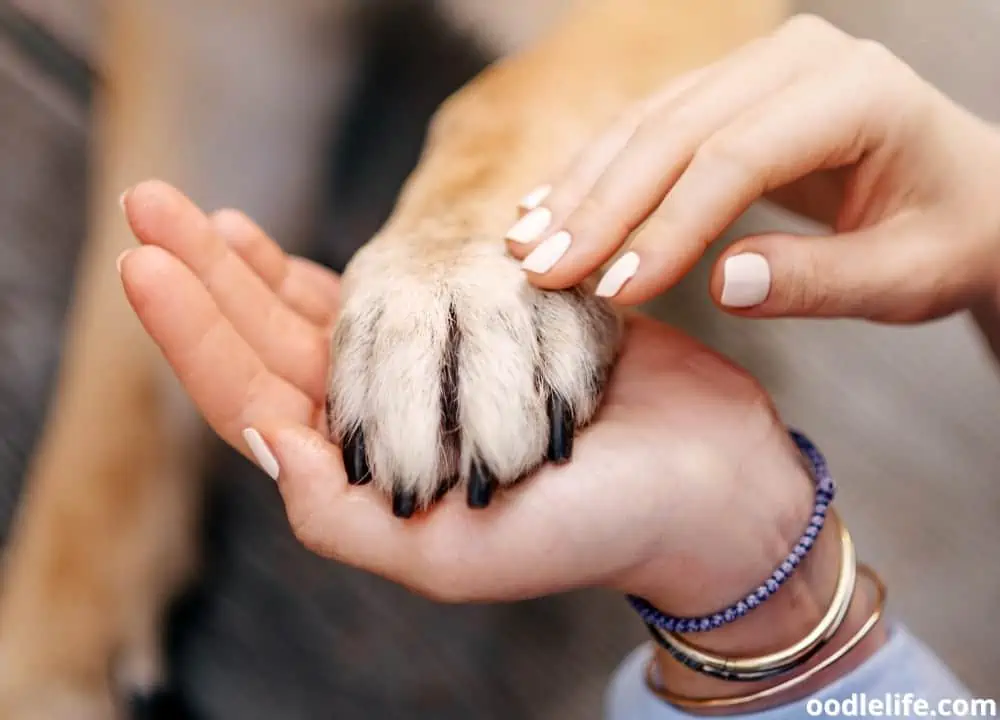Why Does My Dog Put His Paw On Me? [What It Means]
Sometimes I like to imagine what it would be like if my dog could speak. Think of the conversations we would have! The witty banter, the fascinating discussions about politics and world affairs.
Just kidding. My dog would probably want to talk about rolling in stinky stuff at the beach.
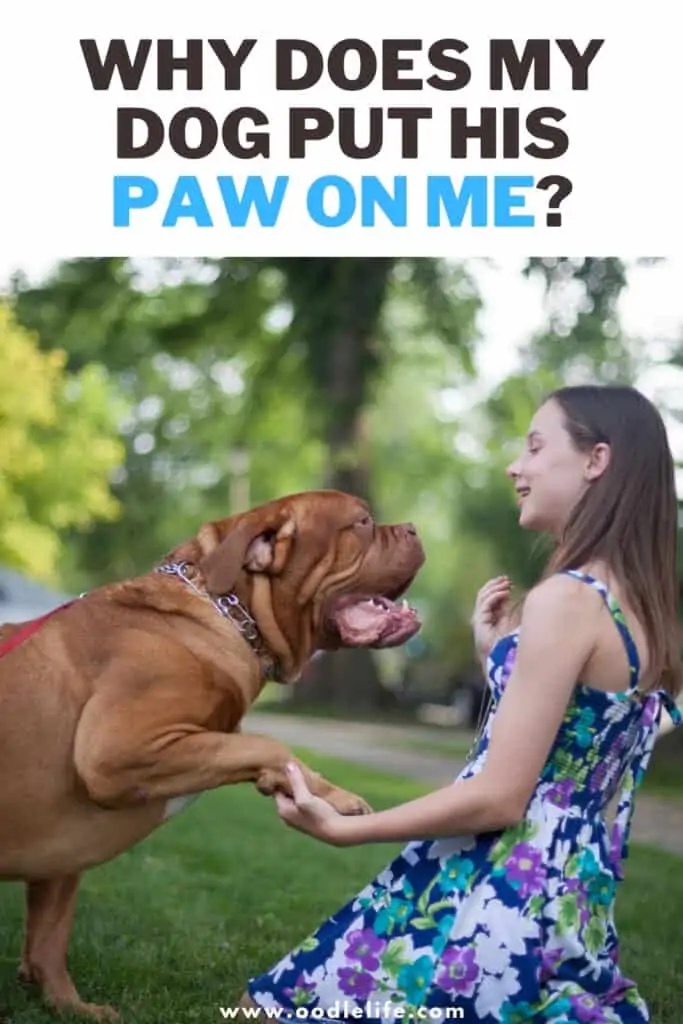
One thing I’d love to ask her is why she does certain things. Why does she insist on rolling in dead stuff at the beach? Why does she always want to lick my face even though I’ve expressed that I don’t enjoy it?
And why does she sometimes like to put her paw on my arm?
Since my dog can’t speak, I’ve had to turn to other resources to find the answers to these questions. I’d like to share what I’ve learned about why my dog likes to put her paw on me. If your dog does the same thing, read on!
Doggy Language
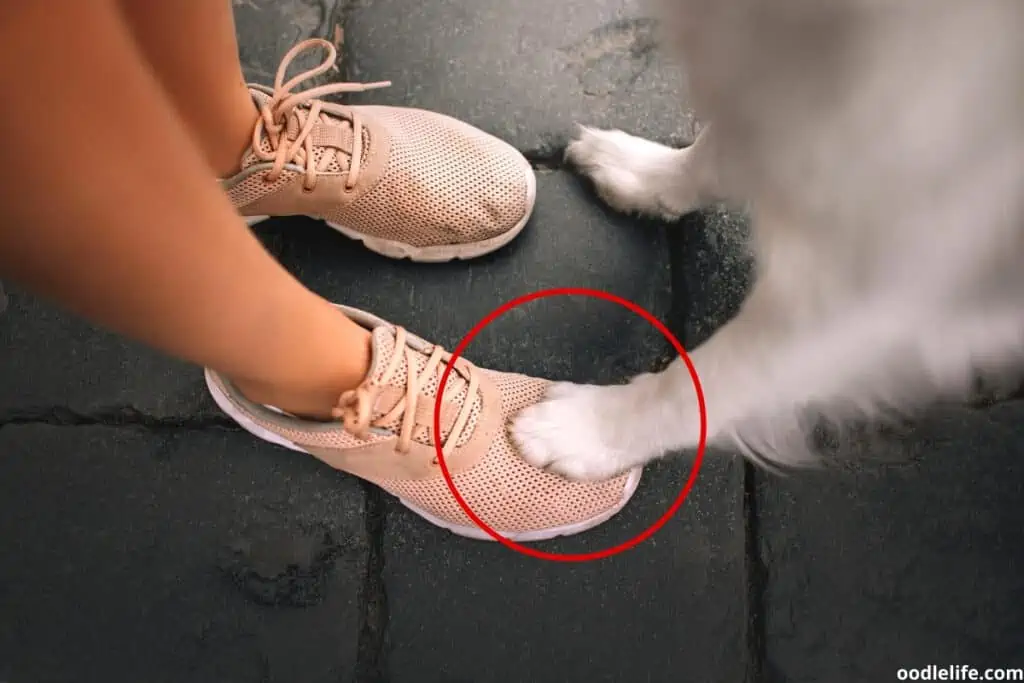
Let’s talk about general dog body language, or “doggy language” as I call it. You might think that barking and growling are a dog’s primary ways of communicating, just like speaking is our primary way of communicating. However, dogs use body language first and foremost to communicate with each other and us.
Some dog body language is easy to pick up on and interpret—a cocked head and perked up ears, for example—while other expressions are more subtle or difficult to read.
For instance, did you know that a wagging tail does not necessarily mean your dog is happy? A wagging tail simply means a willingness to engage with something. That’s why, when you walk past a strange dog in someone’s yard, it might bark aggressively at you and wag its tail at the same time.
How to Read Your Dog’s Body Language?
In general, when a dog is relaxed, he is happy. Relaxed body language cues are soft or “squinty” eyes, a gently curved or loosely held tail, ears in their natural position, and relaxed muscles. If your dog is staring hard at something or has wide eyes, has rigid muscles, perked up ears, or is holding his tail high, he is not relaxed.
Another subtle cue that many owners miss is their dog’s mouth. If your dog’s mouth is loose, open, or gently panting, he’s happy and relaxed. A closed mouth, particularly combined with a hard stare or perked-up ears, usually indicates that he’s spotted something intriguing or potentially threatening.
If your dog is puffing his cheeks (puffing cheeks is a very subtle cue), this is usually a precursor to growling or barking.
Watch your dog’s ears, eyes, and mouth when you’re out and about with him. You can avoid getting your dog into trouble if you pick up on his body language cues early.
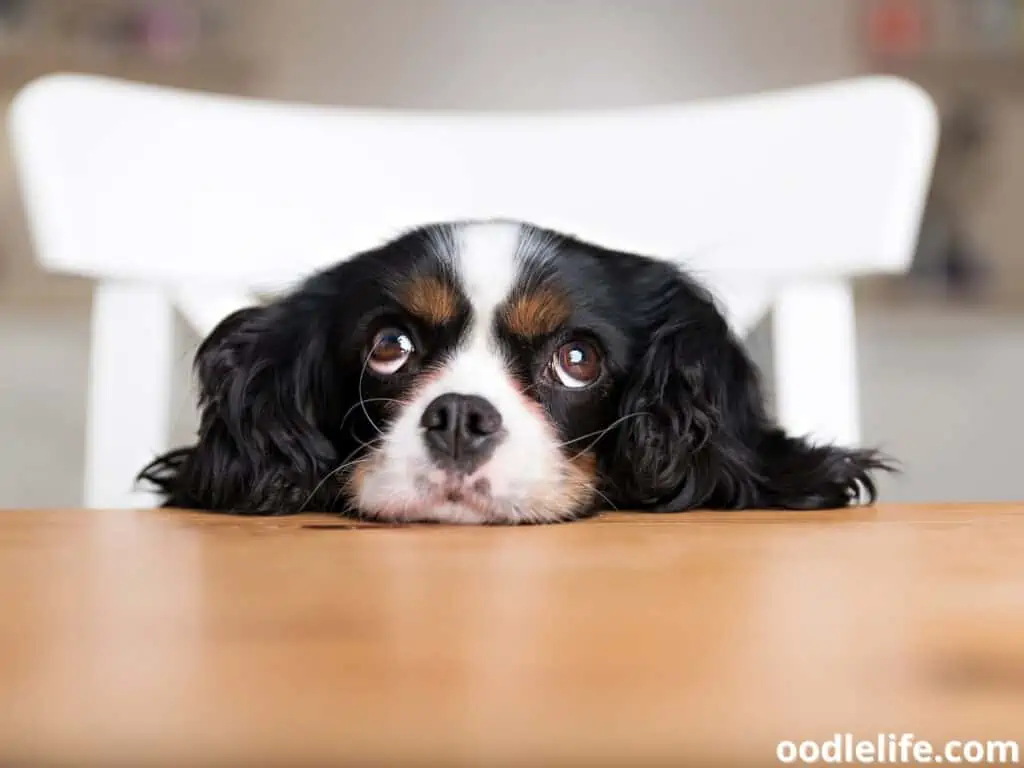
How to Use Proper Dog Body Language Yourself?
Many people, when meeting new dogs, get doggy language all wrong! As primates, our instinct is to want to greet a new person face to face. We like to get close to someone, look them right in the eye, and shake their hand.
This is all wrong for dogs! Above all, dogs like to diffuse tension. Looking another dog directly in the eye is a sign of aggression.
Dogs with good manners will usually approach a new dog in a semi-circle, curving their body away and looking down to indicate that they are not a threat.
If you want to make a good impression on a new dog, the best thing you can do is ignore the dog and let him come to you. Don’t lean toward him, don’t offer him your hand, and don’t look him in the eye. Above all, don’t bend down and stick your face in his!
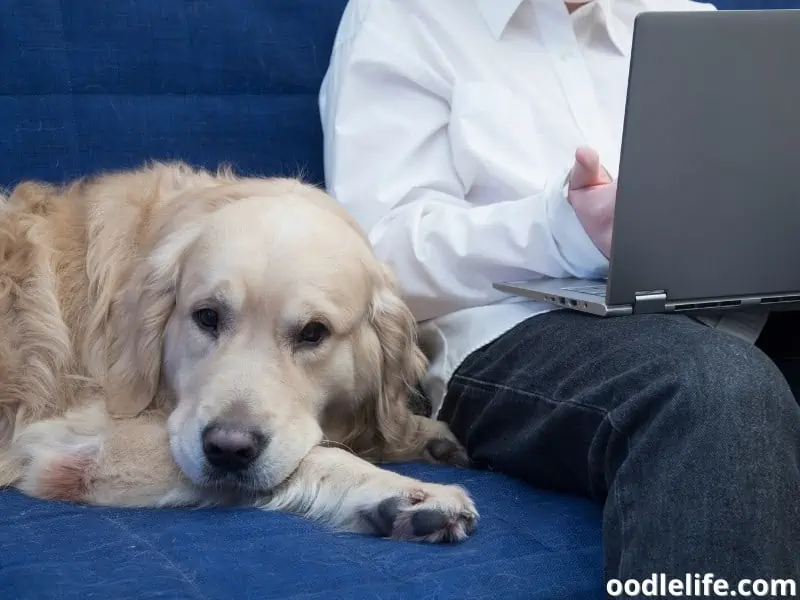
So What’s With That Paw?
Your dog might use his paws as part of his body language to communicate many different things. Look at the situation you’re in and read the rest of your dog’s body language to interpret it. Is your dog relaxed? Happy? Nervous?
Usually, a dog paws at you to initiate communication. It’s a way of getting our attention or asking for something. Why don’t dogs bark to get our attention?
Some do! But many dogs are quiet and reserve their barks only for important moments like signaling danger, frustration, or anger.
Where Did My Dog Learn to Do This?
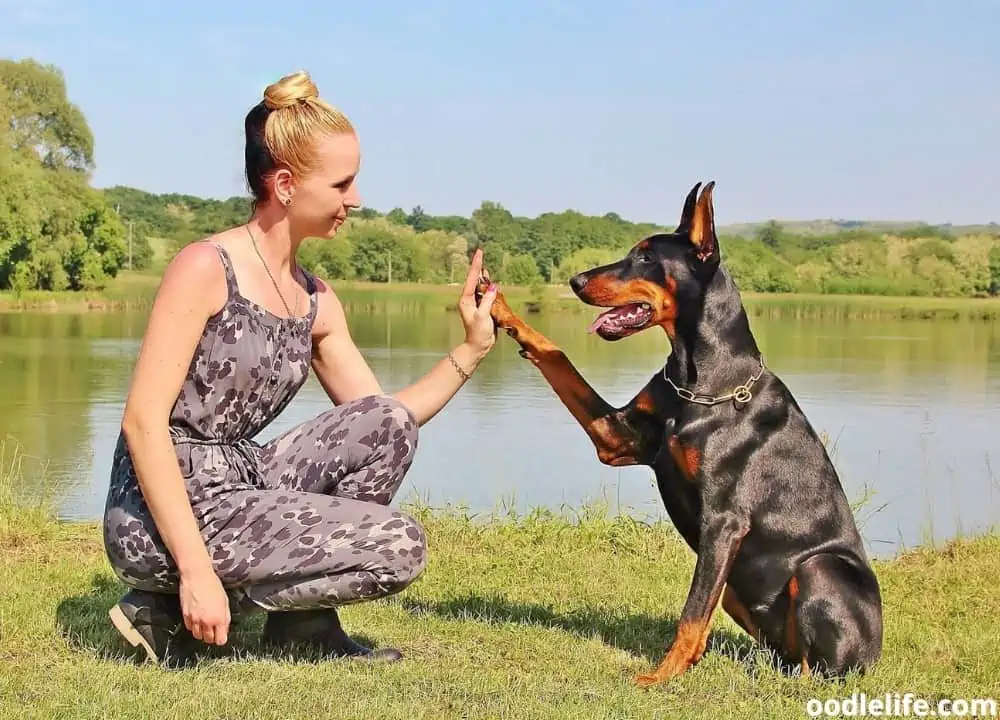
If you’re like many owners, you probably taught your dog “paw” or “shake.” When you did that, you probably rewarded him with treats or scritches. Your dog has learned that when he gives you his paw, good things happen!
Another way your dog might learn to give you his paw is if you practice something called “consent-based petting.” I did this with my dog when we first got her, and I highly recommend it as a way to interact with your dog, especially if your dog is very nervous or doesn’t like to be pet.
In consent-based petting, you wait for your dog to let you know that they want to be pet, rather than forcing yourself on the dog. When your dog is relaxed and sitting near you, gently pet him on the chest for a short time (no more than 5 seconds or so.) If your dog indicates that he wants more, pet him some more.
He might indicate this by pawing at you, moving closer, or simply by not moving away.
When you do this, you are respecting your dog’s boundaries and letting him be in charge of when he is touched. You’re also teaching him to ask you when he would like to be petted. Win-win!
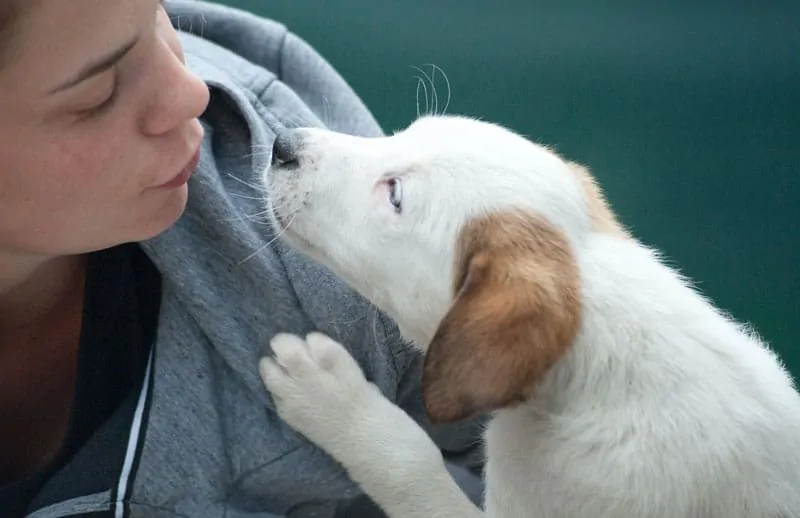
Reasons Your Dog Might Put His Paw on You
As I said before, there are a few reasons your dog might give you his paw, paw at you, or place his paw on you. Let’s take a look at some of those reasons now.
Asking for Scritches
This is a common reason for your dog to put his paw on you. It usually happens when you’re already petting him and you stop. He’s asking for more pets!
It’s up to you whether you want to give him more or if you’re done petting him.
Make sure you teach your dog that you decide when it’s time to stop petting. A cue like “all done” to indicate that you are finished, or “on your bed” to send your dog away is great. Be consistent with it, and your dog will learn.
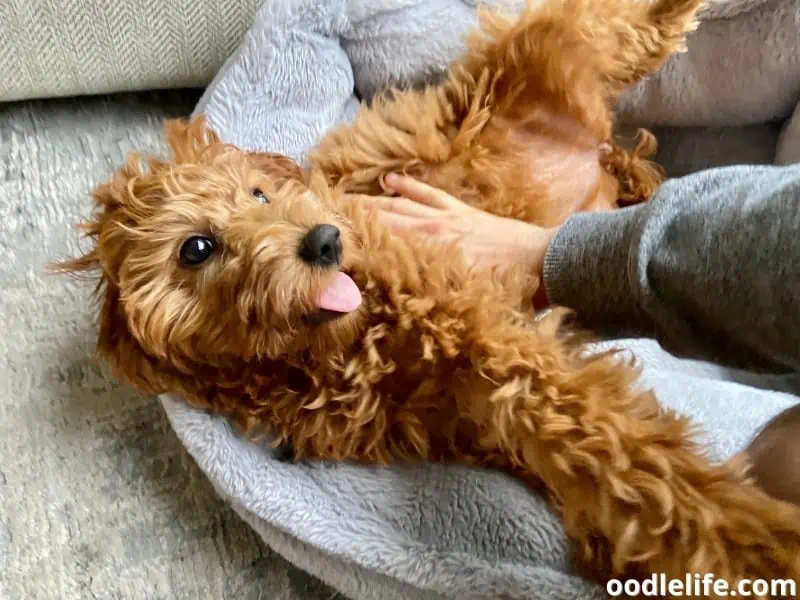
Asking for Something Else
The “asking for something” paw is what most people associate with a dog “pawing” at them. Your dog might paw at your leg if you’re standing, or at your arm, if you’re sitting. It might be a few short, quick paws, as opposed to the gentler paw of asking for more scritches.
Figuring out what your dog is asking for is your challenge! Use environmental and timing cues to help you. Has it been a while since your dog went out? Is it getting close to dinner time? Are you eating a delicious bowl of ice cream? These could all be things your dog is asking for.
Calming You Down
You’ve probably noticed that your dog is very in tune with your emotions. My dog is certainly in tune with mine! I often notice that if I’m getting excited or upset, speaking more loudly, or moving erratically, my dog will come over to me and try to lick me, sit on me, or put her paw on me.
Dogs are incredibly sensitive. That’s why they make such good service animals. When you’re upset around your dog, your energy also affects your dog.
Check out your dog’s body language and see if he’s feeling stressed. If he is, he might put his paw on you to calm you down.
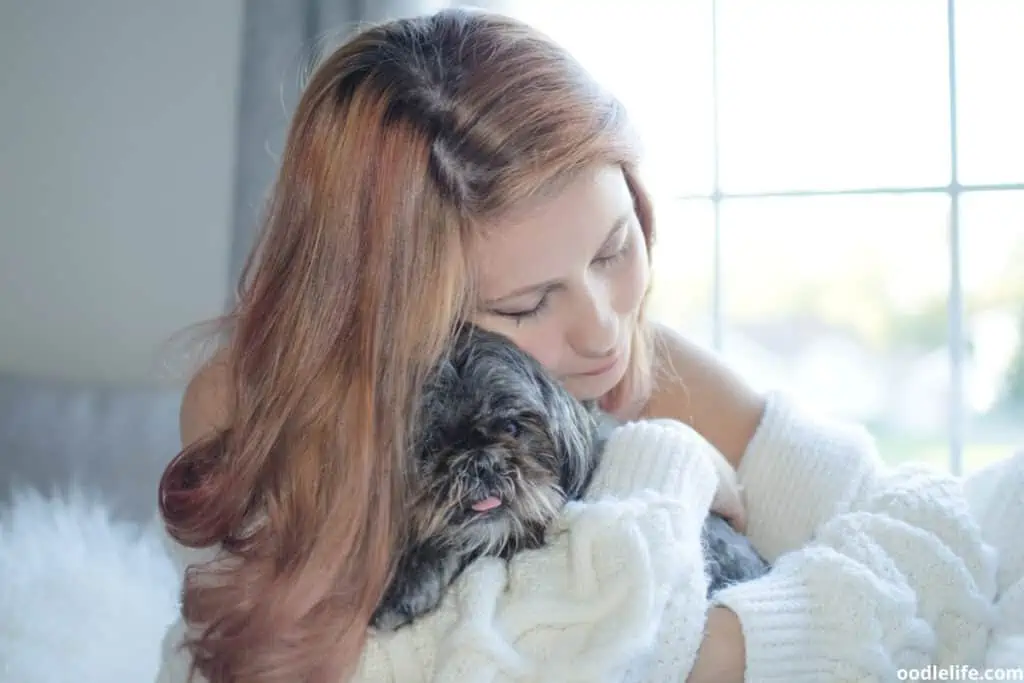
Feeling Nervous
Another body language cue that many people miss is the raised paw. A dog standing still with one paw raised is often nervous or uncomfortable. You see many small dogs out and about doing this, and if you were to get close, you might also find that they are shaking.
That’s an unhappy dog!
A dog raises his paw when he’s nervous as part of a “fight or flight” response. He’s preparing to run away. Your dog might also put his paw on you when he feels nervous because he is seeking comfort.
Look for the following cues to determine if your dog is nervous: licking his lips, yawning, or shaking.
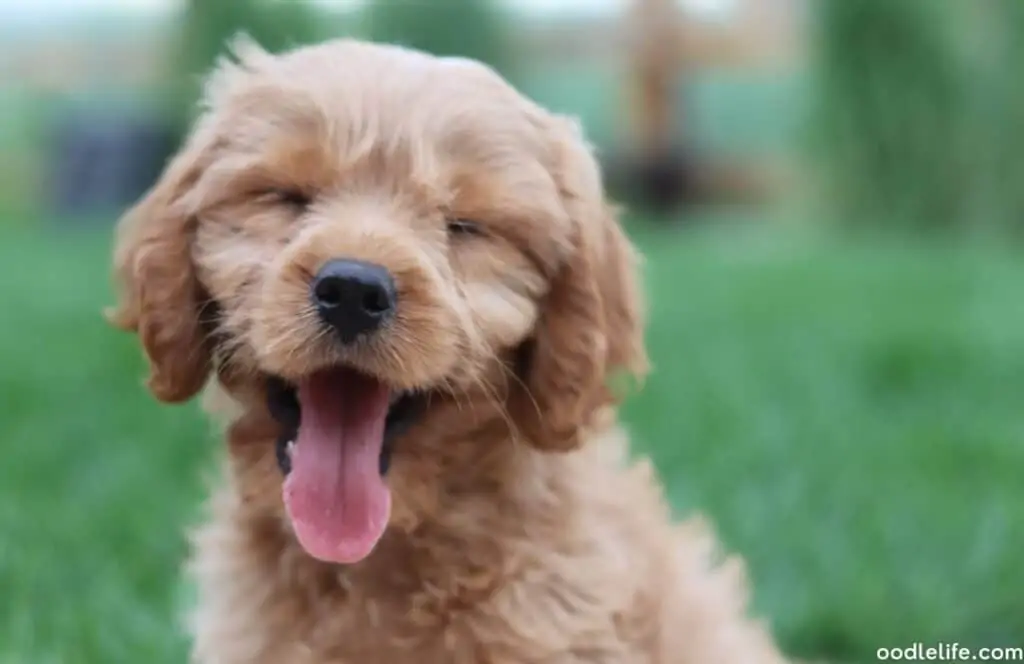
Saying “I Love You”
If you spend a lot of time petting your dog, your dog will probably start to pick up on the idea that petting is an enjoyable thing, and might want to return the favor! Many animals groom each other as a way of expressing affection. Putting a paw on you is your dog’s way of “petting you back.”
This one’s a bit controversial, because who’s to say whether dogs truly feel “love”? Dogs may not feel “love” in the same way that we do, but they certainly enjoy being around their people and making us happy!
